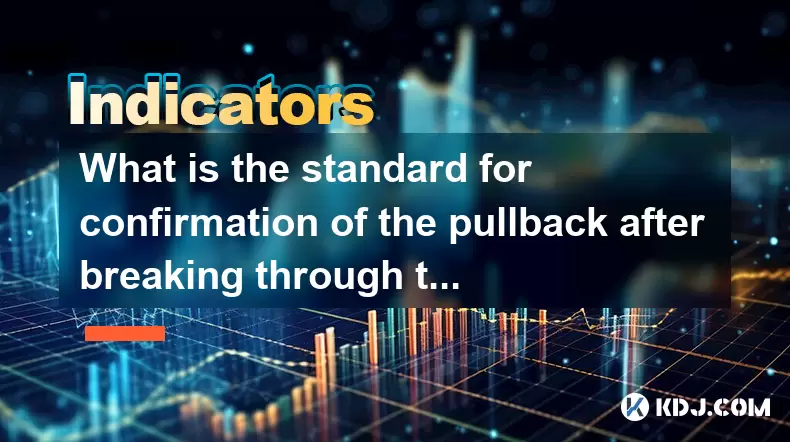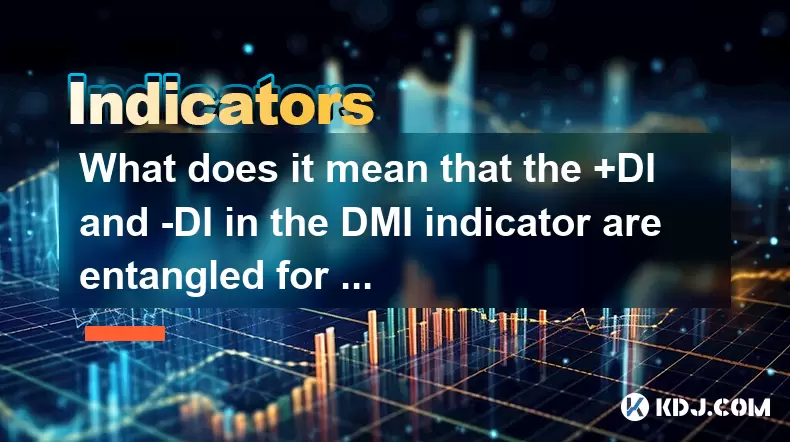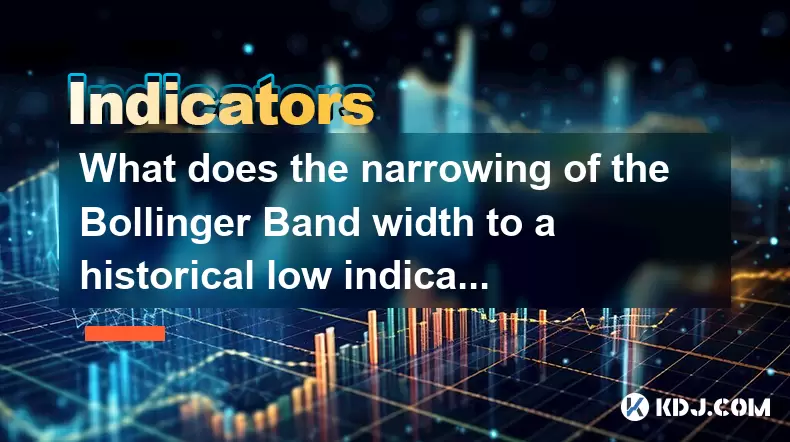-
 Bitcoin
Bitcoin $103,838.1703
5.33% -
 Ethereum
Ethereum $2,364.7328
10.94% -
 Tether USDt
Tether USDt $1.0007
0.03% -
 XRP
XRP $2.0950
9.02% -
 BNB
BNB $634.7170
5.25% -
 Solana
Solana $142.0264
11.70% -
 USDC
USDC $1.0000
0.00% -
 TRON
TRON $0.2728
5.18% -
 Dogecoin
Dogecoin $0.1598
10.80% -
 Cardano
Cardano $0.5655
9.94% -
 Hyperliquid
Hyperliquid $37.8554
11.16% -
 Sui
Sui $2.7196
17.77% -
 Bitcoin Cash
Bitcoin Cash $458.7795
4.67% -
 Chainlink
Chainlink $12.4271
12.53% -
 UNUS SED LEO
UNUS SED LEO $9.0769
0.74% -
 Avalanche
Avalanche $17.7117
12.43% -
 Stellar
Stellar $0.2392
9.83% -
 Toncoin
Toncoin $2.8765
9.58% -
 Shiba Inu
Shiba Inu $0.0...01131
11.69% -
 Litecoin
Litecoin $84.0378
9.79% -
 Hedera
Hedera $0.1456
14.65% -
 Monero
Monero $305.0298
5.16% -
 Ethena USDe
Ethena USDe $1.0006
0.03% -
 Dai
Dai $1.0001
0.02% -
 Polkadot
Polkadot $3.3522
10.31% -
 Bitget Token
Bitget Token $4.0785
3.25% -
 Uniswap
Uniswap $6.7682
13.08% -
 Pepe
Pepe $0.0...09557
13.29% -
 Pi
Pi $0.5253
9.79% -
 Aave
Aave $250.5247
16.65%
What is the standard for confirmation of the pullback after breaking through the neckline with large volume?
A confirmed breakout with high volume and a pullback to the neckline offers traders strong signals for trend continuation in technical analysis.
Jun 23, 2025 at 11:28 pm

Understanding the Neckline in Technical Analysis
In technical analysis, the neckline is a critical support or resistance level that appears in chart patterns such as head and shoulders, double tops, and double bottoms. It typically connects two or more lows (in the case of a head and shoulders top) or highs (in the case of a head and shoulders bottom). When price breaks through this neckline with significant volume, it often signals a potential trend reversal. However, for confirmation, traders look for a pullback to the broken neckline, which acts as a retest before the new trend solidifies.
The breakout must be accompanied by high trading volume, especially in cryptocurrency markets where volatility can lead to false breakouts. This confirms that institutional or large players are participating in the move rather than retail traders reacting emotionally.
What Defines a Valid Pullback After a Breakout?
A valid pullback occurs when, after a confirmed breakout from the neckline with high volume, the price returns to test the former support or resistance area. This retest helps confirm the strength of the breakout.
- Price should revisit the breakout level but not close significantly beyond it in the opposite direction.
- Volume during the pullback should be lower compared to the initial breakout volume, indicating that selling pressure (or buying pressure) is waning.
- The pullback should not violate the original breakout point by a substantial margin; otherwise, it invalidates the pattern.
This behavior suggests that the previous support has now become resistance (or vice versa), reinforcing the validity of the new trend direction.
How to Confirm the Pullback Using Candlestick Patterns
Candlestick patterns play a crucial role in confirming whether a pullback is valid or just a temporary retracement within the old trend.
- Bullish engulfing patterns or hammer candles at the pullback zone indicate strong buying interest if the breakout was bullish.
- Bearish engulfing patterns or shooting star candles suggest strong selling pressure if the breakout was bearish.
- Multiple candlesticks forming near the pullback zone without breaking below (or above) the breakout level increase confidence in the trend continuation.
Traders often wait for a clear close above or below the pullback zone to avoid premature entries based on intrabar noise.
Using Moving Averages and Indicators for Confirmation
Technical indicators can provide additional context to determine whether a pullback is legitimate or a trap.
- The 20-day exponential moving average (EMA) can act as dynamic support or resistance during pullbacks.
- Relative Strength Index (RSI) should remain above 50 in an uptrend or below 50 in a downtrend during the pullback phase.
- MACD line crossing above the signal line during a pullback may indicate momentum returning in favor of the breakout direction.
These tools help filter out false pullbacks and reduce emotional decision-making in fast-moving crypto markets.
Practical Example: BTC/USDT Chart Breakdown
Let’s take a real-world example using the BTC/USDT pair on a daily chart:
- BTC formed a head and shoulders pattern with a clearly defined neckline around $60,000.
- It broke down with heavy volume, signaling a potential bearish reversal.
- Price then pulled back to retest the $60,000 level over the next few days but failed to reclaim it convincingly.
- During the pullback, RSI remained below 50, and candlesticks showed rejection at the former neckline, confirming the downtrend continuation.
This example illustrates how multiple elements—volume, candlestick action, and technical indicators—combine to validate a pullback after a breakout.
Frequently Asked Questions
Q1: Can a pullback occur multiple times after a breakout?
Yes, especially in highly volatile assets like cryptocurrencies. Multiple tests of the breakout level can occur, and as long as the price does not decisively close beyond the original neckline, the trend remains intact.
Q2: Is volume during the pullback more important than price action?
No, both are equally important. Volume gives insight into market participation, while price action reveals sentiment and conviction. They should be analyzed together for better accuracy.
Q3: How long can a pullback last in crypto markets?
There’s no fixed duration, but most meaningful pullbacks in crypto tend to resolve within 2–7 candlesticks on the daily chart. Extended pullbacks may indicate weakening momentum or a potential trend reversal.
Q4: Should traders enter during the pullback or wait for a breakout confirmation?
It depends on risk tolerance. Entering during the pullback offers better entry points, but waiting for a confirmed breakout above/below the pullback zone reduces the chance of being caught in a fakeout.
Disclaimer:info@kdj.com
The information provided is not trading advice. kdj.com does not assume any responsibility for any investments made based on the information provided in this article. Cryptocurrencies are highly volatile and it is highly recommended that you invest with caution after thorough research!
If you believe that the content used on this website infringes your copyright, please contact us immediately (info@kdj.com) and we will delete it promptly.
- Bitcoin Scaling Showdown: Lightning Network, Sztorc, and the Future of Payments
- 2025-06-24 04:25:12
- Cathie Wood, ARK Invest, and Circle Shares: A Wild Ride on the Stablecoin Wave
- 2025-06-24 04:25:12
- Download 2025: Live Review Through Martha's Lens
- 2025-06-24 04:32:10
- Turtle Club Joins Kaito Leaderboard: A New Era for Ecosystem Push
- 2025-06-24 04:35:12
- Crypto Penny Coins: Hunting for Monster Gains in 2025
- 2025-06-24 02:45:12
- Ethereum Whale Dips Into Crashing ETH: Smart Move?
- 2025-06-24 02:25:12
Related knowledge

How to interpret that the time-sharing chart shows "volume and price rise together" but the MACD red column shortens?
Jun 24,2025 at 01:08am
Understanding the Concept of 'Volume and Price Rise Together'In cryptocurrency trading, when a time-sharing chart shows that both volume and price rise together, it is typically interpreted as a sign of strong buying pressure. This means more traders are entering long positions, pushing the price higher while increasing the trading volume. This phenomen...

Is it contradictory that the moving average system is arranged in a bullish pattern but the DMI shows a decline in trend strength?
Jun 23,2025 at 11:43pm
Understanding the Moving Average and DMI RelationshipIn cryptocurrency trading, technical analysis plays a crucial role in identifying potential trends and making informed decisions. Two of the most commonly used indicators are the Moving Average (MA) and the Directional Movement Index (DMI). While both tools aim to provide insight into market direction...

How to interpret that the Williams indicator quickly turns back in the overbought area but does not fall below the 50-axis?
Jun 24,2025 at 02:01am
Understanding the Williams %R Indicator in Cryptocurrency TradingThe Williams %R indicator, often referred to as Williams Percent Range, is a momentum oscillator used by traders to identify overbought or oversold conditions in financial markets, including cryptocurrency. It ranges from 0 to -100, where values above -20 are considered overbought and thos...

What is the significance of the gap formed by the gap opening not being filled within five days?
Jun 23,2025 at 09:42pm
Understanding Gaps in Cryptocurrency TradingIn the world of cryptocurrency trading, a gap refers to a situation where the price of an asset jumps from one level to another without any trading activity occurring between those two levels. This often happens over weekends or holidays when the market is closed, and significant news or events occur that impa...

What does it mean that the +DI and -DI in the DMI indicator are entangled for a long time?
Jun 24,2025 at 04:49am
Understanding the DMI IndicatorThe Directional Movement Index (DMI) is a technical analysis tool used to determine the strength and direction of a trend in cryptocurrency markets. It consists of two main components: +DI (Positive Directional Indicator) and -DI (Negative Directional Indicator), along with the ADX (Average Directional Index) line that mea...

What does the narrowing of the Bollinger Band width to a historical low indicate?
Jun 24,2025 at 02:35am
Understanding Bollinger Bands and Their Role in Technical AnalysisBollinger Bands, developed by John Bollinger in the 1980s, are a popular technical analysis tool used to measure market volatility. They consist of three lines: a simple moving average (SMA) in the center, typically over a 20-period setting, and two outer bands that are set at a standard ...

How to interpret that the time-sharing chart shows "volume and price rise together" but the MACD red column shortens?
Jun 24,2025 at 01:08am
Understanding the Concept of 'Volume and Price Rise Together'In cryptocurrency trading, when a time-sharing chart shows that both volume and price rise together, it is typically interpreted as a sign of strong buying pressure. This means more traders are entering long positions, pushing the price higher while increasing the trading volume. This phenomen...

Is it contradictory that the moving average system is arranged in a bullish pattern but the DMI shows a decline in trend strength?
Jun 23,2025 at 11:43pm
Understanding the Moving Average and DMI RelationshipIn cryptocurrency trading, technical analysis plays a crucial role in identifying potential trends and making informed decisions. Two of the most commonly used indicators are the Moving Average (MA) and the Directional Movement Index (DMI). While both tools aim to provide insight into market direction...

How to interpret that the Williams indicator quickly turns back in the overbought area but does not fall below the 50-axis?
Jun 24,2025 at 02:01am
Understanding the Williams %R Indicator in Cryptocurrency TradingThe Williams %R indicator, often referred to as Williams Percent Range, is a momentum oscillator used by traders to identify overbought or oversold conditions in financial markets, including cryptocurrency. It ranges from 0 to -100, where values above -20 are considered overbought and thos...

What is the significance of the gap formed by the gap opening not being filled within five days?
Jun 23,2025 at 09:42pm
Understanding Gaps in Cryptocurrency TradingIn the world of cryptocurrency trading, a gap refers to a situation where the price of an asset jumps from one level to another without any trading activity occurring between those two levels. This often happens over weekends or holidays when the market is closed, and significant news or events occur that impa...

What does it mean that the +DI and -DI in the DMI indicator are entangled for a long time?
Jun 24,2025 at 04:49am
Understanding the DMI IndicatorThe Directional Movement Index (DMI) is a technical analysis tool used to determine the strength and direction of a trend in cryptocurrency markets. It consists of two main components: +DI (Positive Directional Indicator) and -DI (Negative Directional Indicator), along with the ADX (Average Directional Index) line that mea...

What does the narrowing of the Bollinger Band width to a historical low indicate?
Jun 24,2025 at 02:35am
Understanding Bollinger Bands and Their Role in Technical AnalysisBollinger Bands, developed by John Bollinger in the 1980s, are a popular technical analysis tool used to measure market volatility. They consist of three lines: a simple moving average (SMA) in the center, typically over a 20-period setting, and two outer bands that are set at a standard ...
See all articles
























































































